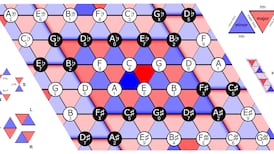Children have an insatiable curiosity, even to the point of driving their parents distracted with repeated questions that usually start with “why” or “how”.
At this time of the year the focus is usually on Santa and his amazing ability to deliver presents to children all around the world in a single night.
Very young children won’t wonder about any of this; they just know it works. But their slightly older siblings will start to probe and at a surprisingly young age. So don’t be surprised if you are quizzed by your four-year-old about how a man fits down the chimney or why you don’t hear hooves on the roof or why a present has a shop sticker on it (Santa subcontracts some manufacturing if the elves get too busy).
Questions about where the toys come from – the North Pole workshops – are easily answered, given the participation of large numbers of enthusiastic elves who are probably looking forward to getting all that overtime.
The question of how a person ends up on the good or naughty list never arose with our three. It somehow just seemed clear that Santa Claus somehow managed to deal with all of that bookkeeping for the hundreds of millions of children who would have been expecting a visit on the night of the 24th.
Magic? My foot
The really big questions come later. For example, how could he possibly get all around the world in one night? Or how could he fit a world of presents in a single large bag balanced on the end of an overwhelmed sleigh. Or how could those reindeer (they are relatively small when they appear at the big Christmas events or on David Attenborough programmes) lift all those gifts and keep the sleigh up for hours and hours.
At this point some parents reach for the handiest answer: “Well the reindeer are magic, and the sleigh is magic, and the bag is magic, and he can just do it because he is magical too.” Even young children recognise a dodge when they hear one, so if you go the magic route, expect to be rumbled. That isn’t an answer.
The children will know there must be technology involved or the ability to go faster than light or sleigh boosters that can do warp speeds.
The problem is, almost all of the really high-tech ways for Santa to pull this off don't just break the laws of physics, they chop them into little pieces.
There really is a plausible way, however, for the jolly fellow with the white beard to make his deliveries within the allotted night of the allotted day without breaking these laws.
Santa is hemmed in by the laws of physics, including one that says he can't travel faster than the speed of light no matter how magical he is, so he can't flit from house to house at light speed to make his deliveries.
But there is a peculiar kind of modern physics that can help explain how he appears to break the rules without actually doing so. It's called quantum mechanics. There are several interpretations of how it can be used to explain the universe, including one by the American physicist Hugh Everett, who called it the many-worlds interpretation or the multiverse.
It holds that we are living in a multiverse of countless universes, each a duplicate of one another. Anything in our past is fixed in time, but the multiverse lies ahead of us and is not fixed until we make a choice and, for example, take the train rather than the bus or eat chicken rather than beef.
Now imagine Santa with countless homes to visit, each requiring a certain mix of toys. He can choose a home and appropriate toys and instantaneously be there to deliver them, with that house and presents fixed in time.
He can then move on to the next multiverse home with its mix of toy options. He doesn’t have to carry all the toys at once: they will exist as options in his multiverse and are fixed when he makes his choice.
We don’t know how he learned to exploit the multiverse, and there may be some magic involved in Santa being able to remember everything he needs to make his deliveries successfully. But somehow he does, and hopefully everyone will enjoy a little bit of magic tomorrow morning, when Christmas Day dawns.
TWO BILLION DELIVERIES: SANTA’S ARDUOUS TASK
Later this evening, all going well, Santa will take off from his workshops at the North Pole and deliver gifts to children all around the world. It is quite a tall order given the sheer number of homes to be visited and the weight of goodies on his sleigh.
There are more than two billion children on the planet. Even if you calculate that only Christian homes will expect a visit, this still means 132 million homes, estimates suggest.
He would have to traverse 282 million kilometres to be able to reach them all . And to accomplish this in the 31 hours of darkness he would experience as he travelled from east to west, he would need to visit almost 1,200 homes per second. He needs to be quick, given that he would have about 1/25,000th of a second available per house to get down the chimney, deliver gifts, eat any cookies left for him and then scoot back up to his sleigh on the roof.
The reindeer would have to hover rather than sit on the roof, given that there would be perhaps 300 million kilograms of gifts on board, more than enough to flatten the house like a pancake.
And yet, despite these challenges, Santa still manages to deliver for children around the world.












